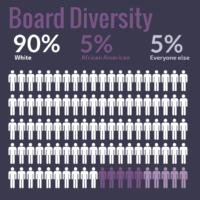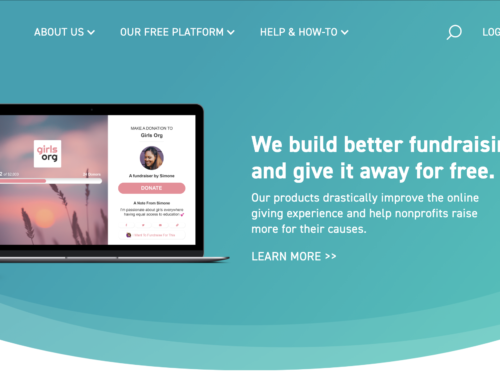I’m about to say something that won’t really be a revelation, but sometimes we need a reminder. Your nonprofit board and my nonprofit board face similar challenges!
I feel better when I remind myself of this. I’m just part of a large, frustrated community of nonprofit leaders all yearning for a better board. We look at other nonprofits and sigh with envy over their great members and how active they are and wish we had a board even half that engaged. Plus, the organization really does do such great work! I’m sure we’ve all been there…right? Right?
OK, well, that doesn’t really matter anyway because the reality is more complicated than whose name is on your roster. Building an active and effective nonprofit board is an ongoing process. There’s no right or wrong way or time to start – and no point trying to wait until you have the perfect members.
I looked at Board Source’s 2017 Leading with Intent study to identify three trends among the nonprofit boards they surveyed that I have also seen repeatedly in my career – and some ideas about how to start building the board you want.
1. Your Nonprofit Board Doesn’t See the Forest for the Trees
Everyone is very busy. This manifests itself at board meetings with members who haven’t read the materials and aren’t prepared. When the committee chair begins their report is the first time they flip to it. The meeting focuses on the activities of the organization and functions essentially as an update for the members. Unfortunately, they still won’t remember much because they were bombarded with too much information. The staff has spent hours preparing, only to be confronted with a board that doesn’t have much to say. In fact, according to the report, only 26% of board meetings focus on strategy and policy vs. operational issues.
So how do you help your board lift up its collective head and look around at the big picture?
You lead the way. From the Executive Director on down, everyone preparing reports for the board should center them around the organization’s strategic goals. Instead of listing the activities, talk about their impact – I guarantee it will stick better in the mind of your board members too. Remind the board members about what the strategic goals are and how the various programs fit into that framework. If you don’t treat the strategic plan as a living document as you run the day to day at the organization, you can’t expect the board to do so.
2. Your Nonprofit Board is “Bad at Fundraising”
Board Chairs give themselves a C+ in fundraising, while the Executive Directors give them a C. These are the lowest ratings of all the areas of board service. Hardly a surprise to any development professional, but also hardly inevitable.
First, decide what you want your board to do to support fundraising and clearly articulate those expectations. In many organizations, this can be incorporated into a Board Member Job Description or an annual engagement plan. Be sure to include a mix of options across the fundraising cycle from cultivation and stewardship to solicitation. Remember, board members can be involved in thanking donors, not just asking them.
These expectations should be immediately included in your recruitment process. Prospective board members who are aware of the fundraising expectations prior to their service help create a board culture of philanthropy.
For board members who weren’t given these expectations before they came on board, I recommend introducing them slowly. Start with involving them in thanking donors, a win for everyone. In my experience, it makes them more comfortable interacting and talking about the organization. Then, give them some easy wins. Ask a reluctant board member to reach out to a regular donor to express appreciation for past support and confirm their donation this year. Getting a positive response and a donor who is pleased to hear from the organization goes a long way towards making a reluctant board member warm up to fundraising.
The process of teaching them the joy of development and philanthropy is worth it for you, them, and the organization.
3. The Board and the Staff Aren’t on the Same Page About the Board
 I don’t think it will come as a surprise that the Executive Director and Board Chair often have very different ideas about nonprofit board governance. Nowhere does this continue to be more persistent than in the recruitment process and board diversity.
I don’t think it will come as a surprise that the Executive Director and Board Chair often have very different ideas about nonprofit board governance. Nowhere does this continue to be more persistent than in the recruitment process and board diversity.
“Since BoardSource began tracking diversity data through this study, the levels of board diversity have largely remained unchanged, with people of color and ethnic minorities never representing more than 18 percent of board membership.”
While 65% of Executive Directors are express dissatisfaction with diversity on their board, only 41% of nonprofit board members do. Too often people of color are overlooked as philanthropic leaders for board service and it limits the organization’s reach, fundraising, impact, and innovation. The country is changing and is more diverse than ever. Nonprofits must continue to evolve and become more inclusive to remain relevant and impactful.
Unfortunately, there is no magic bullet solution, but you must focus on diversity in your recruitment process. Recently, we prepared a short list of 20 prospective board members, only one of whom was a white man, for four open spots. The board settled on three white women and one black man as first round candidates. They also selected a couple of additional backups, including two white men (one of whom they had thought of on the spot), even after a discussion reaffirming their support of diversity on the board. Two steps forward, one step back.
Strategic direction, fundraising, and organizational governance are the most important aspects of board governance. As this post delves into above, the 2017 Leading with Intent study shows many boards struggle with these. Leaders across the nonprofit sector have identified similar areas for improvement and are leading toward similar goals. We can continue to share best practices and ideas to help move our organizations’ boards forward toward long-term success.






